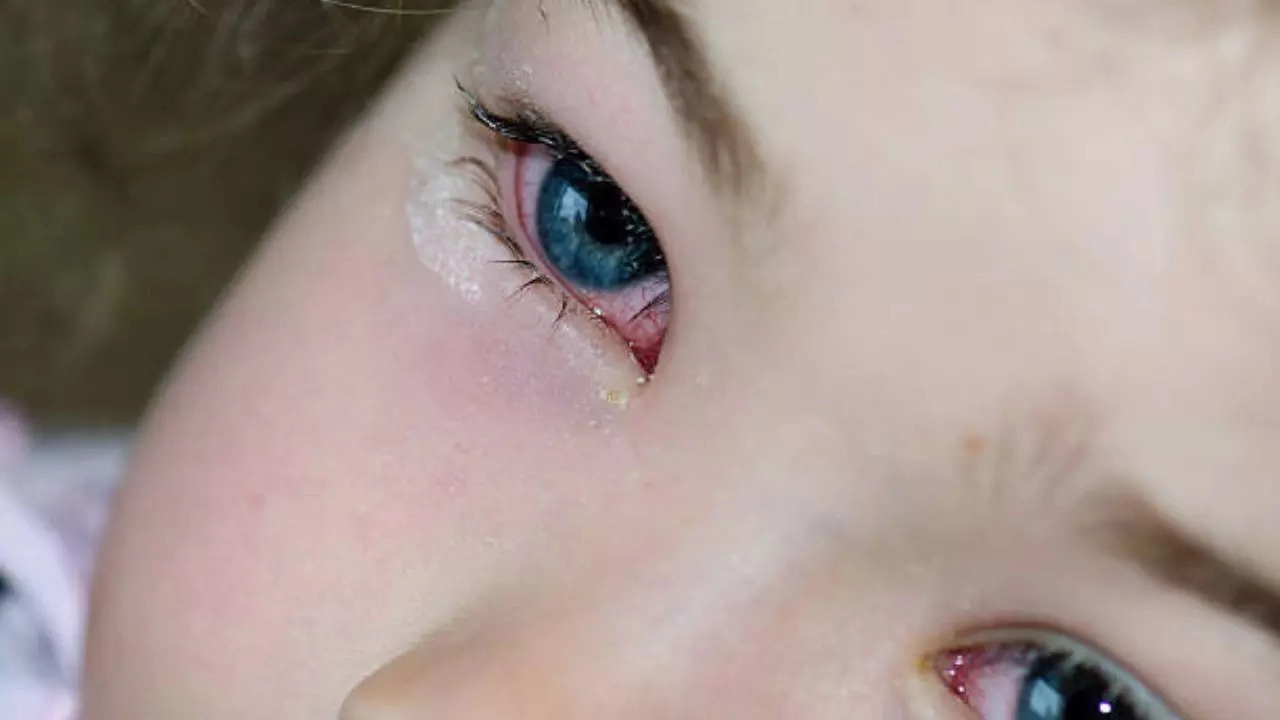Ashima Sharda Mahindra • 07 Aug 2024
Conjunctivitis Alert: Why Are Children Prone To This Monsoon Ailment? Know Ways To Protect

Children get conjunctivitis by touching an infected person or something they have touched, like a used tissue
Also known as Pink Eye, Conjunctivitis is the most common eye condition that affects the clear membrane covering the white part of the eye and the inside of the eyelids. Caused by It can be caused by infection or allergies – conjunctivitis is especially common among children under five years of age as it is highly contagious.
According to doctors, most children recover within one or two weeks, but the symptoms are extremely severe and do not go away on their own. Prompt treatment can help prevent serious eye health issues.
How does conjunctivitis spread?
Doctors say pink eye spread is the most common infectious condition and comes in four subtypes: viral, bacterial, fungal, and parasitic. Viral and bacterial conjunctivitis are extremely common, while fungal and parasitic conjunctivitis are generally uncommon or even rare.
According to experts, viruses and bacteria cause the greatest number of acute conjunctivitis among kids, who are mostly too often in close contact with each other and may not practice good hygiene. Pathogens spread easily from one person to another and contaminate surfaces like doorknobs and school desks. Children may also get conjunctivitis by touching an infected person or something they have touched, like a used tissue. During monsoon, it also spreads through contaminated water or shared towels.
Signs and symptoms of conjunctivitis in children
Itchy, irritated eyes
Swelling of the eyelids
Redness of the conjunctiva
Mild pain when the child looks at a light
Burning in the eyes
Eyelids that are stuck together in the morning
Clear, thin fluid leaking from the eyes, most often from a virus or allergies
Sneezing and runny nose, most often from allergies
Stringy discharge from the eyes, most often from allergies
Thick, green drainage, most often from a bacterial infection
Ear infection, most often from a bacterial infection
Lesion on eyelids with a crusty appearance, most often from a herpes infection
Ways to protect kids’ eyes
Doctors say some forms of conjunctivitis are preventable, and a few things you can do for that include:
Washing your hands frequently
Make sure to use soap and water to wash your hands whenever you come home from outside. You can make sure the child uses an alcohol-based hand sanitizer when at school.
Eat a balanced diet
“Include foods rich in Omega 3 fatty acids, Vitamins A, C, and E, and minerals like zinc. Adequate hydration is necessary to keep their eyes optimally functional,” Dr. Kruti Shah, Consultant Ophthalmologist, at Dr.Agarwal’s Eye Hospital, told Times Now.
Proper lighting conditions at home
According to Dr. Kruti, it is important to make sure your child studies in a well-lit environment. Eye strains can otherwise cause itching, and watery eyes and make them prone to infections like conjunctivitis. “The light should fall directly on the reading material, not over their shoulder, to minimize glare and eye strain. Proper lighting can significantly improve reading comfort and prevent eye fatigue,” she added.
Safety measures to avoid eye injuries
Promote safe play habits and keep sharp objects and flammable items out of reach. “Use protective eyewear when necessary to promote eye safety,” Dr. Kriti added.
Eye check-ups
“If you notice your child struggling to read from a normal distance, squinting, or exhibiting other signs of vision problems, schedule an eye examination,” she said. Regular check-ups would also ensure that if your child is prone to infections, you can get it treated well in time.
Get Latest News Live on Times Now along with Breaking News and Top Headlines from Health and around the world.